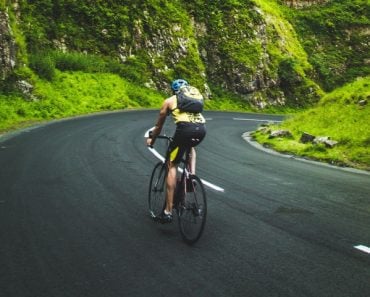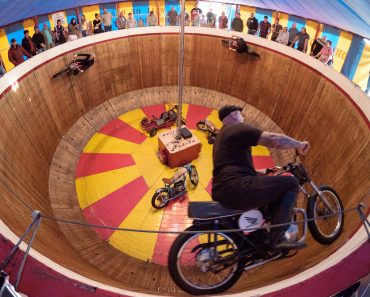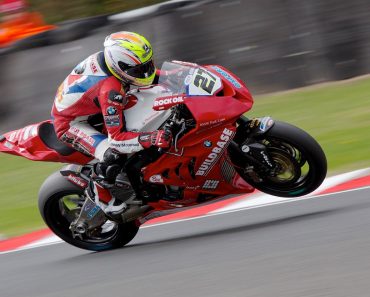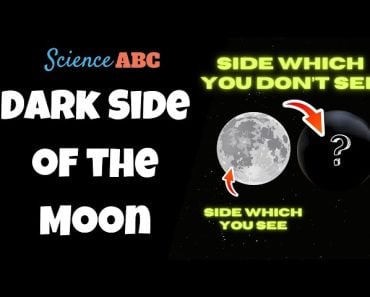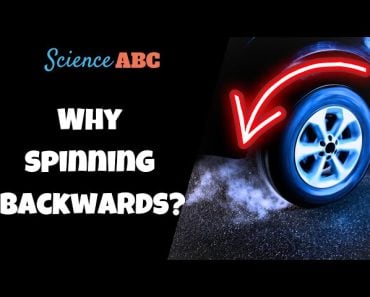Table of Contents (click to expand)
The centrifugal force, or the ‘center-fleeing force’, is what keeps motorcycles from tipping over on sharp turns. This force pushes on the motorcycle in the direction of the center of the circle, and cancels out the torque from the gravitational force.
If you’ve ever watched motorbike racing events, you would have marveled at how the motorcyclists manage to bend so far, so close to the ground, and still not tip over. God help you, if ever you tried to do that, the outcome may not set a great example for your friends and maybe everyone else (the ones not even related to you).
Have you ever thought about that? How do bikes manage to bend so much without tripping over?
Well, it’s time to unravel this strange asphalt mystery.
An important factor in this is the angle of banking. You would have seen roads which have sharp turns are a bit elevated on the inner side. This is called ‘banking of roads’. Banking of roads also facilitates maneuvering tight turns without tipping over. But let’s talk about the forces which act on a motorbike when it takes a sharp turn.
Recommended Video for you:
Newton’s Second Law
As if the real ones were not good enough, there is a whole other world, a world of “fake” forces. We know that when force is applied to an object, its motion (or the way it is moving) is impacted. For example, when you ride a bicycle that is moving slowly, it attains speed and begins to move faster. This is how force impacts motion; it has a direct relationship with the acceleration of a body according to Newton’s Second Law, as follows.
![]()
Also Read: Why Do We Lose Our Balance When We Step Down From A Moving Train?
Introducing Fake Forces
Newton’s second law only acts in non-accelerating reference frames. When you are sitting in a moving car, we want Newton’s Second Law to work, as it always does. This is why we add a fake force to the whole system.
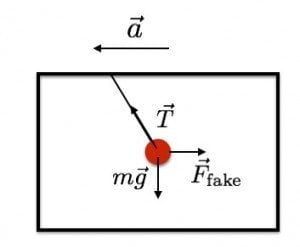
This fake force acts in the opposite direction of the acceleration of motion. This is the force that pushes a ball back when it is hung on the rear-view mirror of a car to balance out the horizontal component of the tension acting on the ball. This is also why the ball does not hang when the car is in motion, but instead appears to fly along with the car.
How This Applies To Motorcycles
When a motorcycle is moving in a circle (taking a turn usually involves moving in a circular way on the tracks) it has a certain amount of acceleration. The fake force, in this case, acts in the opposite direction and pushes the rider in the opposite direction of the acceleration.
Well, in the case of motorcycles, there is a name for this fake force: centrifugal force, also known as the ‘center-fleeing force’.
Also Read: What Are Centripetal Acceleration And Centrifugal Force?
Bending The Motorcycle
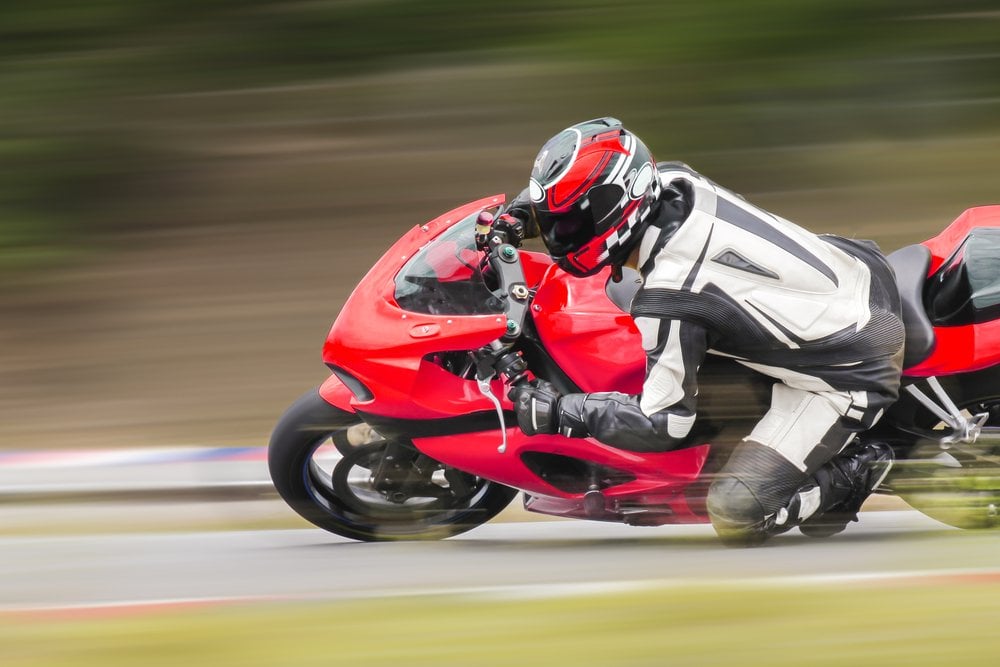
There is a torque acting on the bike when it moves in a circular path. Torque is a measure of how much a force acting on an object causes that object to rotate. In the case of a motorcycle, there is an external force that pushes on the motorcycle in the direction of the center of the circle. This force is usually same as the frictional force caused by the contact of the tires and the road.
Leaning With The Motorcycle
The frictional force (caused due to the contact between the tires and the road) and the normal force (caused by the ground pushing the motorcycle up) have zero torque, since they are both applied at the point where torque is calculated. Look at the figure below:
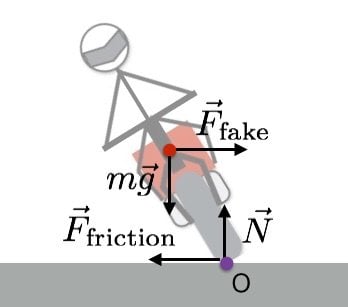
That leaves just the torque from the fake force and the torque from the gravitational force. These torques are in opposing directions, so they can cancel each other out, creating a stable system. On the other hand, in the case of a bike taking a sharp turn without leaning, the force of gravitation pushes up through the point of torque to produce zero torque. Zero torque from that position means that it cannot cancel the torque from the fake force; thus, the whole system is not balanced.
In a few words, the torque from the gravitational force cancels out the torque from the fake force, so you don’t tip over. It means that leaning helps a rider stay on the bike while taking a turn at a significant speed. It may sound very strange, but it’s actually true.
In other words, leaning helps because the laws of physics are protecting you!
Also Read: What’s The Physics Behind A Wheelie?

